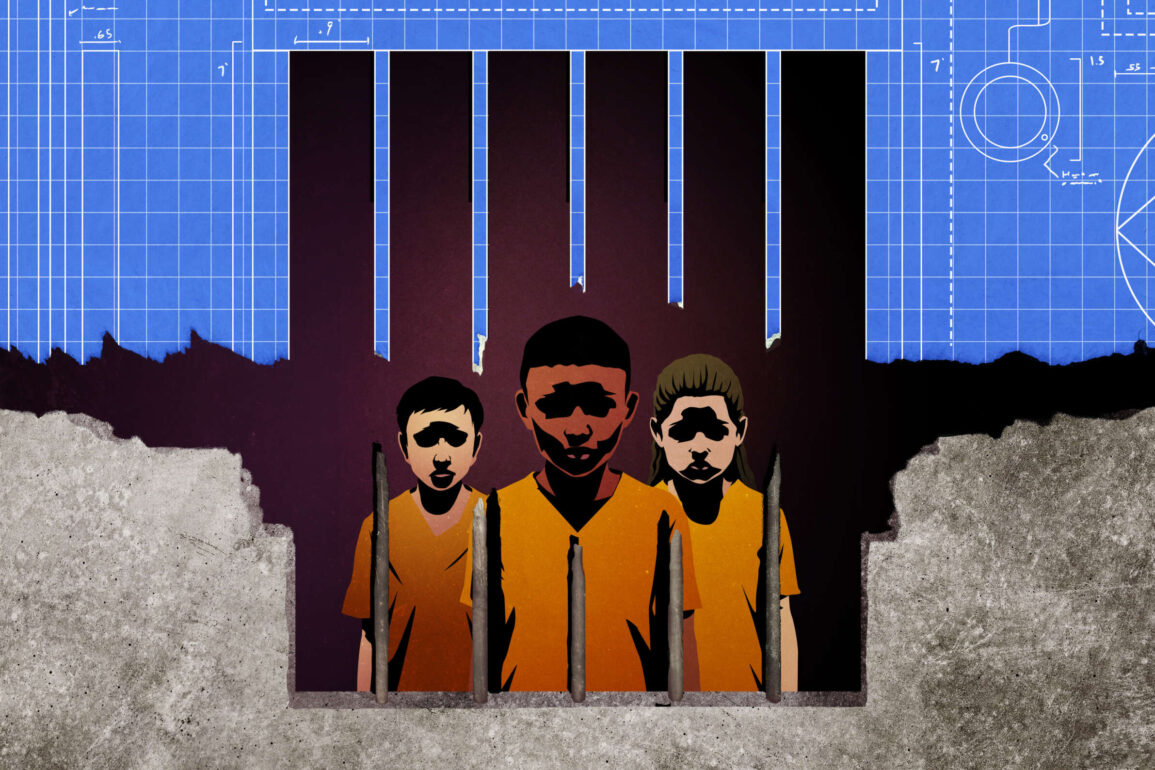
I felt it birth in my core and sneak its way up my windpipe. It slithered over my vocal cords and caught in my throat just for a second. Its rancid flavor morphed into an unfamiliar word and settled on my tongue, disgusting my taste buds. It escaped my clenched teeth and forced its way through my tightly pursed lips before finding its place in my unwelcoming ears — “numb.”
This was my body’s reaction to acting Illinois Department of Corrections Director Latoya Hughes’s March 15, 2024, memo to all individuals in custody in Illinois. During the past 33 years of my incarceration, I have received hundreds of department memos. I ignore or throw out most of them, but this one was different.
Earlier in the day, Illinois Gov. J.B. Pritzker made an announcement that the state would be closing two of its aging and deteriorating correctional facilities. The first would be Logan, the facility that housed women, and then Stateville, the men’s facility in Crest Hill, Illinois.
For those of us who have spent any amount of time in these facilities, the words “aging” and “deteriorating” are gross understatements.
Pritzker later stated, “Unfortunately over many years, the state has neglected to do anything about the conditions in these prisons. We’re stepping up and actually making a proposal and then putting money forward to do the right thing.”
My initial reaction was: thank you. I’ll finally be able to have my incessant cough properly diagnosed. We’ll all be able to have our blood tested for lead levels. The vermin, roaches and birds that infest the kitchen, dining halls and living units will be exterminated.
Then the other shoe dropped. The governor shared his plan to not only demolish these facilities, but to then spend close to $1 billion dollars in taxpayer money to rebuild both facilities.
My numbness comes from the realization that my two preteen nephews will be targeted for capture and deliverance into state slavery — just as their father and uncle were.
My body and brain reacted. They were rejecting this news on a visceral level and I couldn’t intelligently or verbally articulate my feelings. Numb.
I must’ve repeated that word — numb, numb, numb — or some variation of it a hundred times over the past seven days, absorbing it deep in my viscera.
Numb, numbing, numbness. These words had a hold on my being and refused to release me. They were demanding to be wielded at this particular moment in time. After years of neglect and dismissal, the state was paying attention to the conditions of our prisons, and this was the result.
The state memo notes that the rebuilding plans resulted from the Department of Corrections contracting with an “outside firm” to “assess and report on the physical condition of each facility to identify our needs.” But the assessment of “needs” wasn’t focused on the actual human beings incarcerated behind these prisons’ walls and razor wire-topped fences. It was focused on the physical steel, brick and mortar structures. What about our needs? The state isn’t prioritizing the physical, mental or psychological conditions and/or needs of the humans being held.
The state’s words and actions are less about the demolition of an inhumane, dilapidated, 102-year-old prison plantation than they are about forecasting the “criminal” futures of a whole generation of people who are now too young to have committed even a single criminal act.
The memo notes that its proposals for building prisons take into consideration “population projections, staffing levels and the infrastructure of the facilities.” I read this to mean: In the future, the state will need space to cage today’s Black, Brown and poor preteens. We will need jobs for our small towns and illogical building projects to generate kickbacks.
This point was reinforced during an April town hall meeting here at Stateville Correctional Center, attended by the director and other officials. A high-ranking official told us that they would be building this next facility for “future generations that will be coming to prison.”
My fellow incarcerated brothers, sisters and siblings understand clearly this isn’t about us. This is about the children who are left behind and the ones who are not. This is about the future housing of one group and the employment of another.
My numbness comes from the realization that my two preteen nephews will be targeted for capture and deliverance into state slavery — just as their father and uncle were. It comes from the dread of one day meeting them for the first time — here. It comes from not knowing how to help them to walk the system’s tightrope — backward, hands tied, with no safety net.
My numbness comes from having turned 20 years old in prison, and then turning 52 in the same housing unit, 32 years later. It comes from missing 32 Thanksgivings, 33 Christmases and almost 13,000 days of freedom for crimes committed as a child.
It comes from asking reentry organizations how they plan to activate around the prison-rebuilding issue, and receiving no substantive response.
It comes from some members of my own incarcerated community believing it’s preferable to be in a “better cage,” rather than none at all.
It comes from our state government planning to spend close to $1 billion on two “state of the art” prison facilities, when the communities we come from have never seen a single $100 million high school or community space.
It comes from the sad fact that the only time some young folks will ever see a “state of the art” anything built specifically for them, it will be a prison.
My numbness comes from missing 32 Thanksgivings, 33 Christmases and almost 13,000 days of freedom for crimes committed as a child.
I have more years behind me than I have ahead of me. I may be lost to the historical genocide that is mass incarceration. I do not plead for myself. I plead for the next generation who will witness more money and resources invested in two prisons than will ever be invested in their survival. I plead for the mothers who fear their sons and daughters will be lost to prisons as their fathers, mothers, brothers, sisters and husbands were.
I plead for the lives and futures of my two nephews. I wish I could offer what’s left of mine in their place. I pray they are not forced to grow up in a world where they’ll see more places being built to enslave them than to educate them.
I have never met or touched my nephews because their parents don’t ever want them to step foot inside of a prison — free or otherwise. I respect their decision. I long to meet my nephews, but if the state plans for our first meeting to be as they are spending their first days of incarceration inside a shiny, brand new Stateville Correctional Center, then I pray I never do.
I may feel numb, but nevertheless, I am pleading: Invest in our young people now, so this place isn’t the state’s destination for them later. Our future generations deserve abundant lives, not “better” cages.
This post was originally published on this site be sure to check out more of their content.







